You wouldn’t want to start your day with a mold bathroom ceiling as bathrooms are supposed to make you feel refreshed. Although mold on your bathroom ceiling may just seem to be an aesthetic annoyance, it actually poses serious risks to your property and health.
Looking up, you see ugly black blotches spreading over the ceiling of your bathroom. You’ve just learned about the hidden danger of mold bathroom ceilings. Mould is not only unsettling, but it also poses major health hazards, especially to the elderly and other sensitive demographics like children.
We’ll cover all you need to know about bathroom ceiling mold in this in-depth guide, from recognizing its symptoms to avoiding its growth and treating existing mold.
What Is Mold On The Bathroom Ceiling?
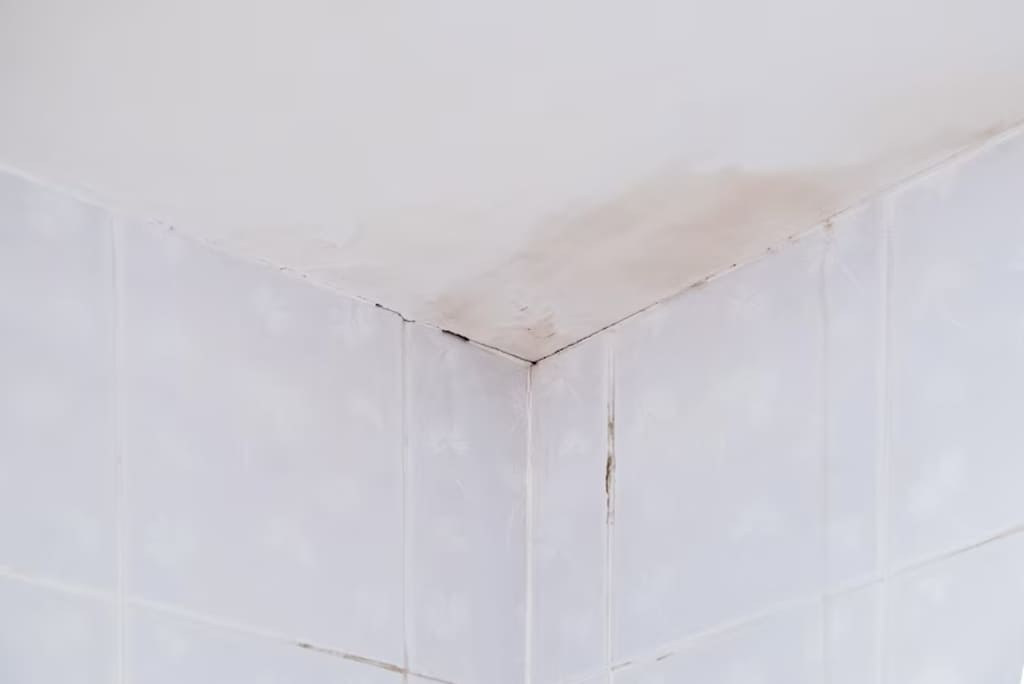
A particular type of fungus called mold prefers settling down in damp, poorly ventilated spaces. And your bathroom ceiling is what could possibly be the best breeding habitat. Mold may convert your once-pristine refuge into a haven of unattractive black blotches and an unpleasant musty smell with its continuous presence.
It may even aggravate pre-existing ailments and set off allergies and respiratory problems. Therefore, it’s imperative that you prepare yourself with information on this unwanted visitor and discover how to permanently expel it from your bathroom ceiling.
5 Types of Mold in Bathroom Ceiling
| Sr no. | Mold Type | Appearance | Preferred Conditions | Health Risks |
| 1 | Aspergillus | Powdery patches | Damp environments | Allergic reactions |
| 2 | Cladosporium | Dark green or brownish | Damp areas | Respiratory issues, allergies |
| 3 | Stachybotrys Chartarum | Blackish-green | Excessive moisture, water leaks | Severe health problems due to mycotoxins |
| 4 | Penicillium | Blue or green fuzzy patches | Various surfaces, including bathroom ceilings | Allergic reactions, respiratory issues |
| 5 | Alternaria | Dark brown or black spots | Damp areas, water damage | Allergic reactions, asthma symptoms |
5 Key Factors Causing Mold in Bathrooms
1. Moisture
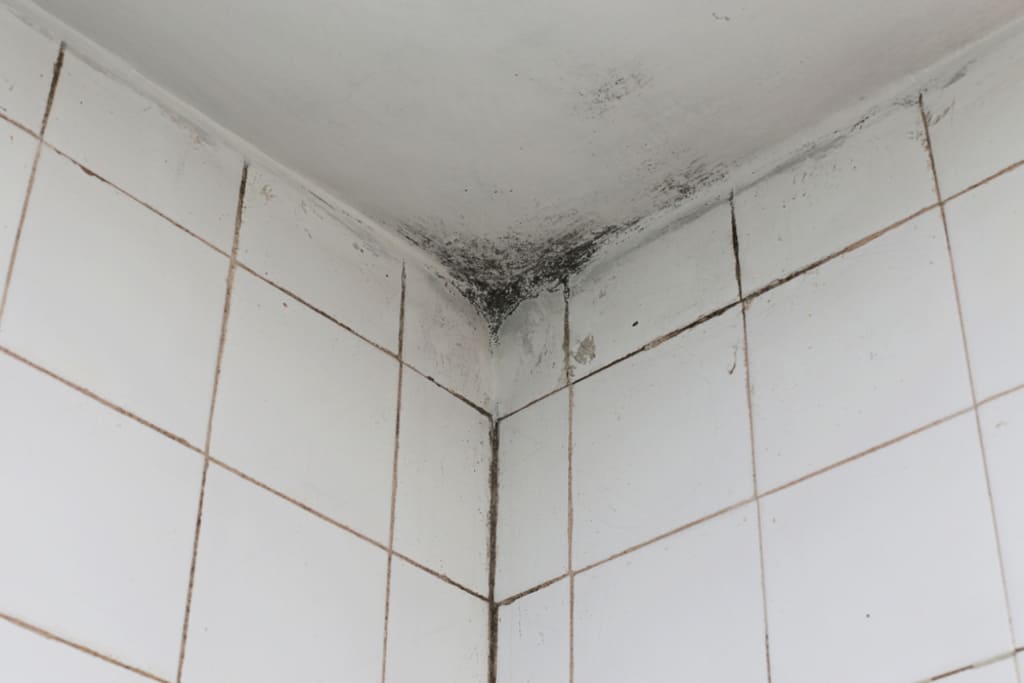
Bathrooms are inherently damp spaces. However, dampness may also occur from sneaky leaks and plumbing errors in addition to your relaxed practices. You see, when moisture remains on the roof of your bathroom, it’s as if mold is invited to a perpetual party.
2. Poor Ventilation
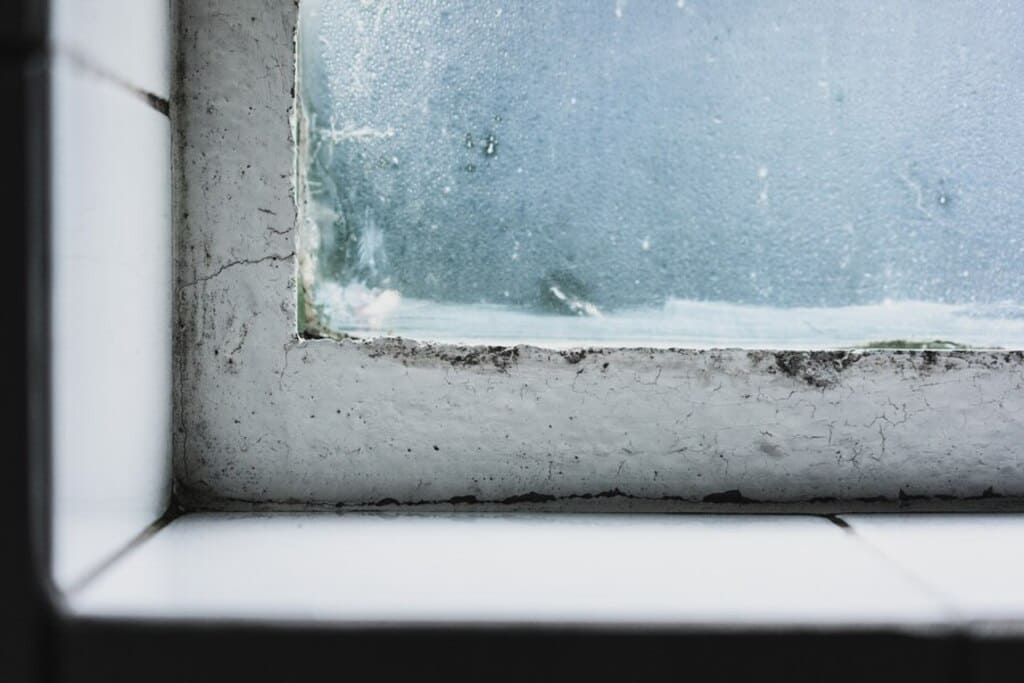
Poor ventilation in bathrooms collects moisture, enabling it to stick to surfaces like the ceiling and hang about in the air. Moisture cannot evaporate due to insufficient ventilation, creating the ideal environment for the formation of black mold in bathroom ceilings.
There are ways to address this heinous lack of airflow. By installing exhaust fans, you may provide the damp air with a straight escape path, sweeping it away and preventing it from accumulating on your ceiling.
3. Inadequate Insulation
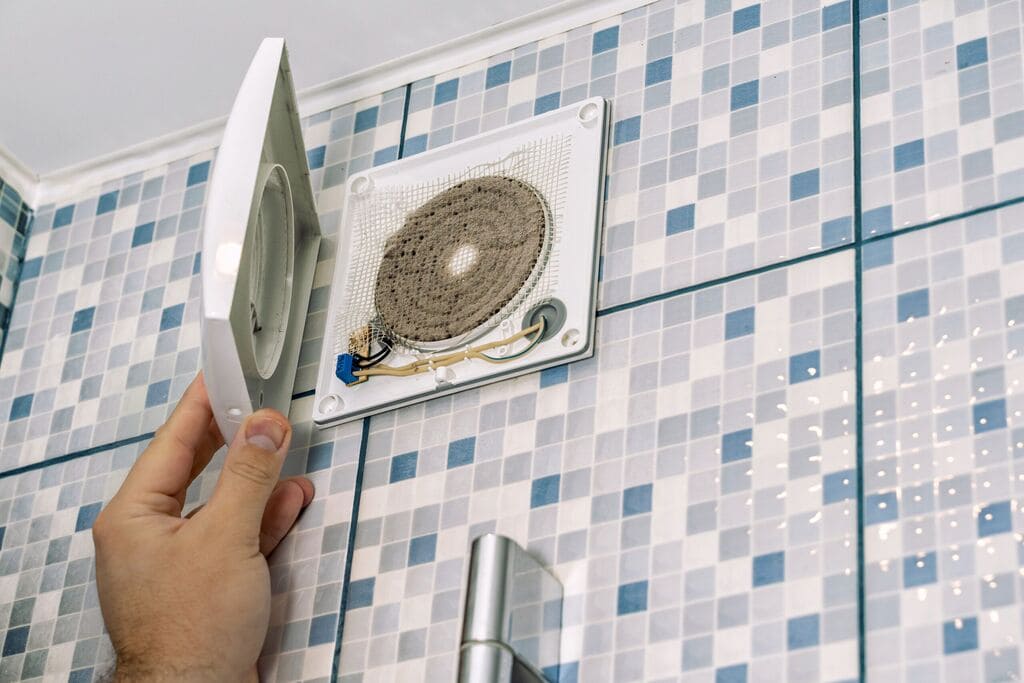
When you think of your bathroom, insulation might not be the first thing that comes to mind, but it is extremely important for preventing moisture accumulation. Your ceiling fails to act as a barrier between the warmer, damp air and the colder surface when it is improperly insulated.
Therefore, always keep in mind that effective insulation is the key to preventing mold growth in bathroom ceilings. Maintaining a cool, dry ceiling will keep humidity and mildew from taking hold in your bathroom.
4. Structural Issues
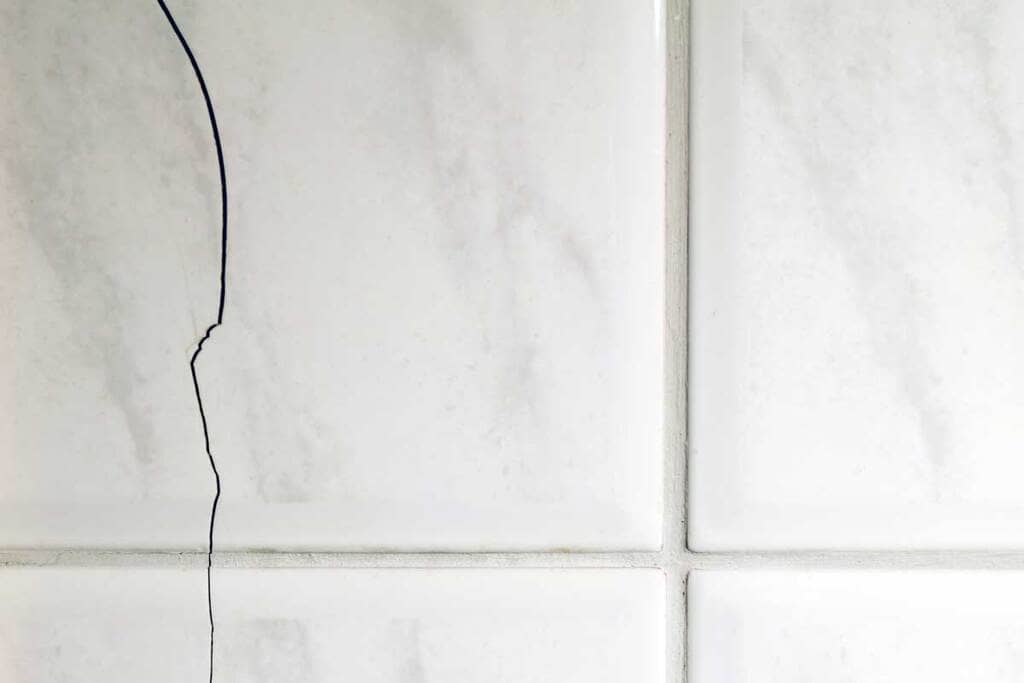
Your ceiling becomes a damp access point when there are cracks or holes in it. These gaps give moisture a chance to enter your ceiling, whether it’s via plumbing leaks or water vapor from your showers.
It’s critical to address structural concerns as soon as possible to combat this. A barrier against moisture infiltration is created by patching up cracks, caulking openings, and maintaining the structural integrity of your ceiling.
5. Lack of Cleanliness
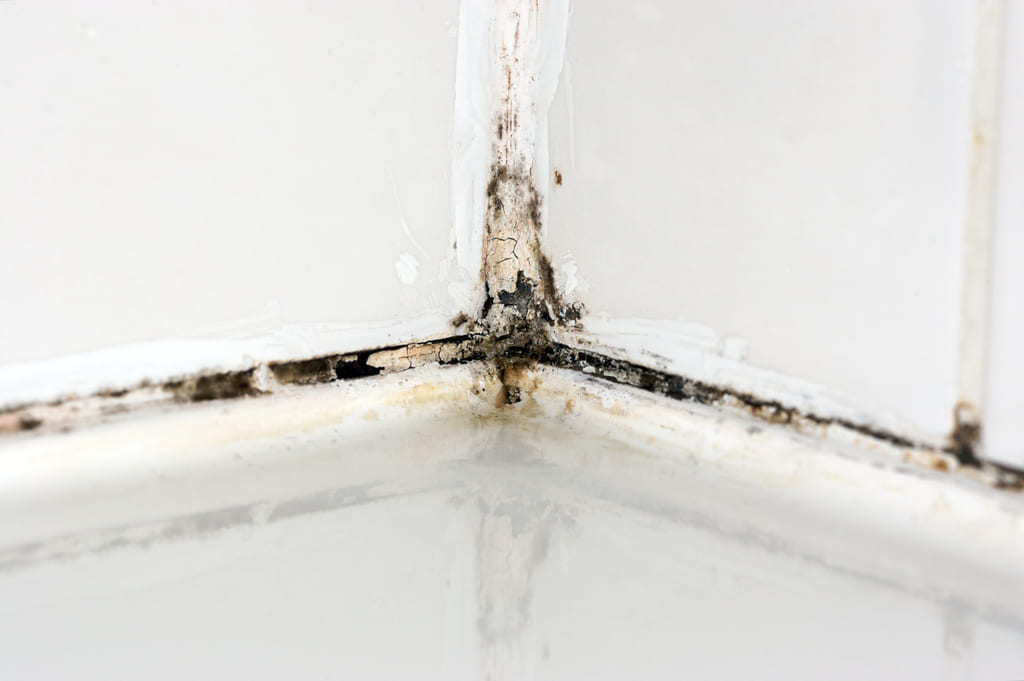
When you ignore the cleanliness and maintenance of your bathroom ceiling, you create an environment in which mold may thrive. Dust settles, grime builds up, and organic stuff rises to the surface. These items may appear to be innocuous, but they act as a breeding ground for mold bathroom ceilings, supplying the nutrients it requires to thrive and distribute its spores.
4 Useful Methods to Prevent Mold in Bathrooms
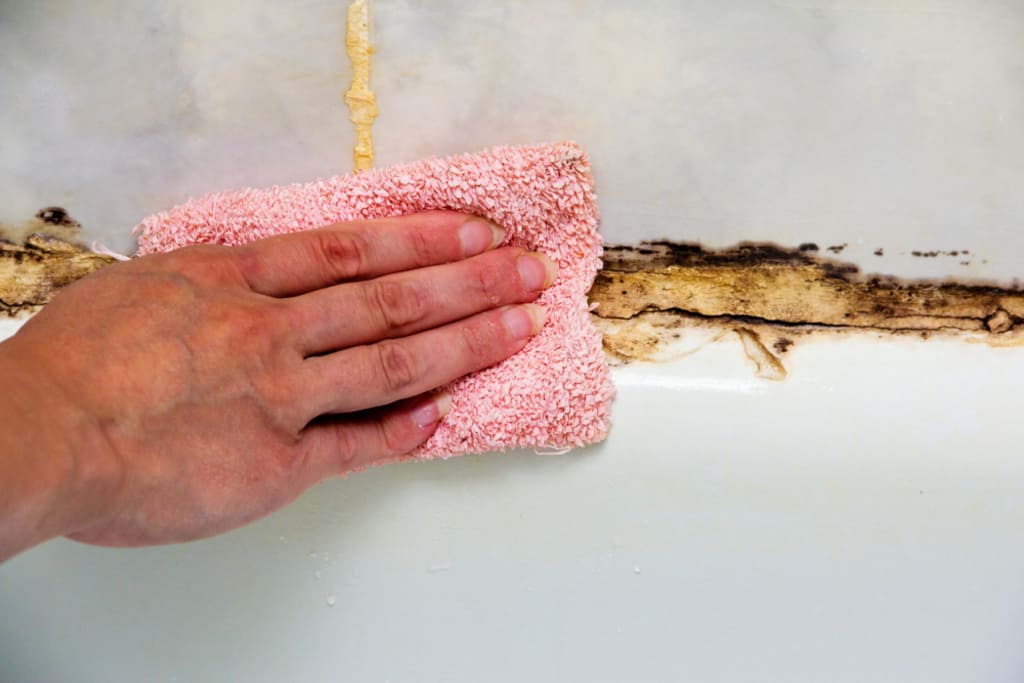
1. Proper Air Circulation
Proper ventilation and air movement are essential for minimizing moisture buildup, which creates an excellent habitat for mold bathroom ceilings. Install and utilize bathroom exhaust fans correctly. To eliminate extra moisture, turn on the fan during and after showers. Furthermore, opening windows or utilizing dehumidifiers can enhance air circulation and lower humidity levels, therefore preventing mold formation.
2. Cut the Moisture
Moisture is a major accelerator for mold in shower, so keeping your bathroom ceiling dry and mold-free is critical. Wiping down surfaces and removing any extra water after each usage is a useful approach for combating moisture collection. By paying close attention to the shower walls, flooring, and bathtub area, you can avoid moisture from lingering and provide a perfect habitat for mold to thrive. You can see small bathroom ideas.
Pro Tip: To properly remove water droplets from surfaces, consider using a squeegee or a microfiber cloth.
3. Prevent Plumbing Leakages
Your first line of defence against mold is to remedy leaks and plumbing concerns as soon as possible. You may avoid more water damage and the growth of mold on the bathroom ceiling by taking fast action. A minor leak may appear trivial now, but it may wreak havoc on your bathroom’s infrastructure and jeopardize your health and well-being over time.
Pro Tip: Inspect your plumbing system and fixtures on a regular basis to catch any leaks or problems early on.
4. Shower Screen
Shower curtains or screens serve as dependable defenders, keeping the water contained within the shower area and preventing it from cascading into your bathroom ceiling. Cleaning and maintaining shower curtains or screens on a regular basis is critical to their performance. Soap scum, mineral deposits, and mildew can form over time, reducing their capacity to repel water efficiently.
Pro Tip: Consider running a dehumidifier in your bathroom to further decrease moisture accumulation. This can help eliminate excess moisture from the air and surfaces, making the growth of mold in the bathroom more difficult.
4 Tips to Remove Mold in Bathrooms
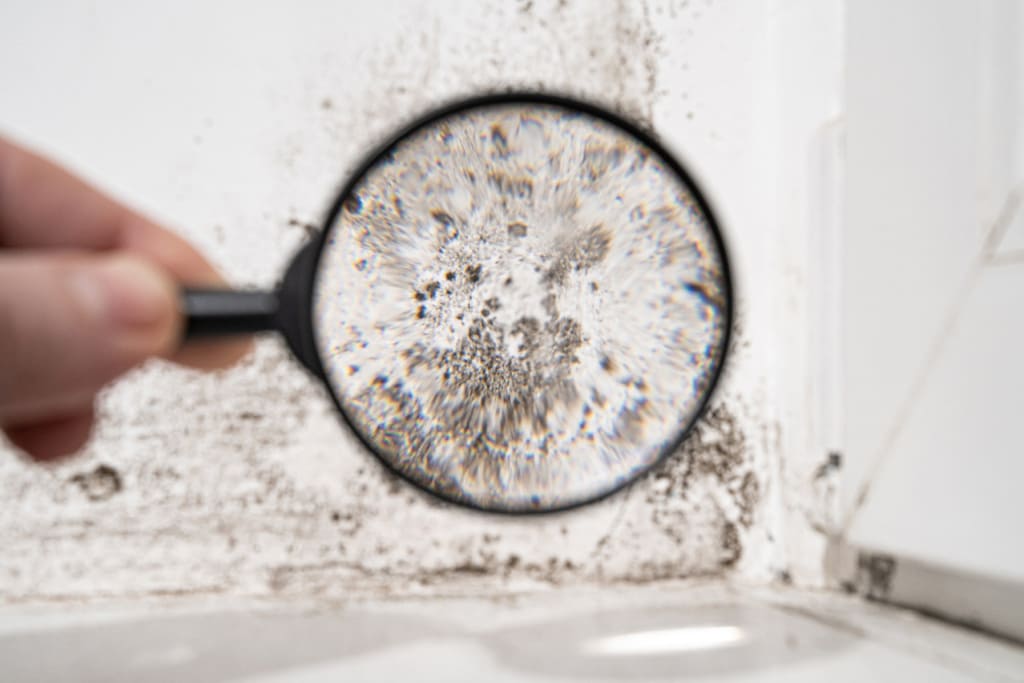
1. Discover the Problem Areas:
Inspect your bathroom thoroughly to discover the mold-affected areas. Examine the ceiling, walls, grout lines, and any other moist or humid areas where mold thrives.
2. Safety
First and foremost, apply gloves, a face mask, and protective eyewear before beginning the mold eradication process. Opening windows or using fans to circulate fresh air is also important to prevent mold bathroom ceiling.
3. Use Effective Cleaning Methods:
There are various effective cleaning methods you may use to eradicate mold from bathrooms. To treat the damaged areas, use equal parts water and vinegar or water and bleach. Allow it to rest for a few minutes before scrubbing the mold away with a brush or sponge. To eliminate any leftover residue, thoroughly rinse the area with water.
4. Prevent Future Mold Growth:
Take preventive actions to keep the mold bathroom ceiling from returning. After showering, provide appropriate ventilation in the bathroom by utilizing exhaust fans or opening windows. Wipe away any excess moisture and keep surfaces clean and dry. In order to eliminate possible water sources for mold, assess and fix any leaks or plumbing faults on a regular basis.
How to Clean Mold off Bathroom Ceiling using DIY Methods:
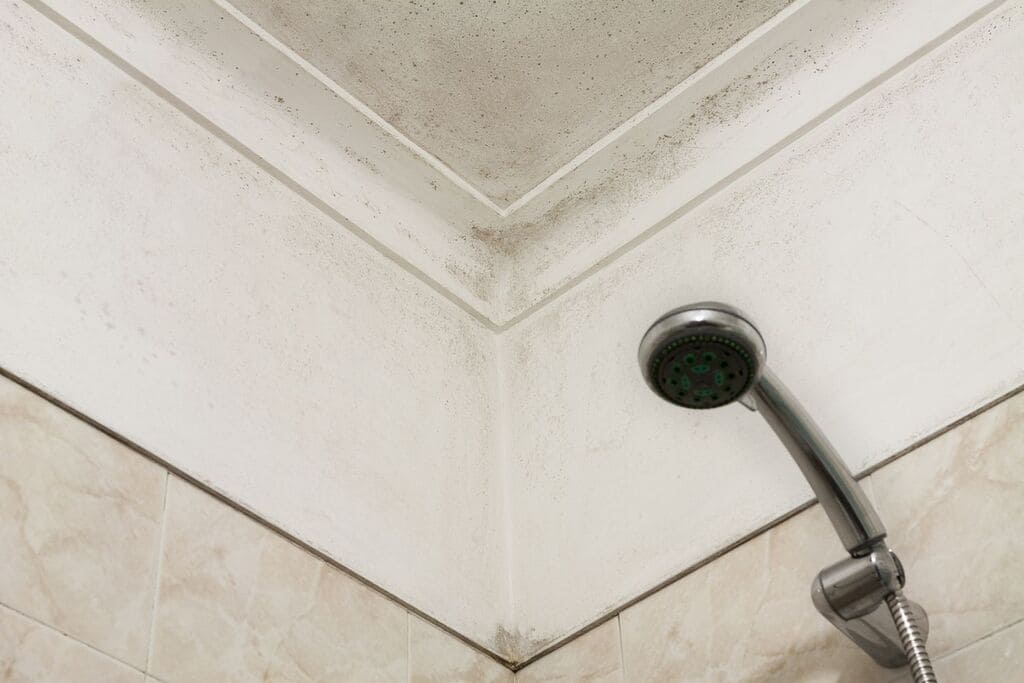
1. Hydrogen Peroxide Solution:
In a spray bottle, combine equal parts hydrogen peroxide and water to combat mold on your bathroom ceiling. Spray the solution directly into the moldy area to ensure thorough coverage. Allow for 10-15 minutes for it to infiltrate the mold.
Scrub the mold on the bathroom ceiling with a brush or sponge to loosen and remove the mold. Before moving on to the following step, rinse the area with water and make sure it is totally dry.
2. Tea Tree Oil
Looking for a natural solution to remove mold bathroom ceiling? Test the effectiveness of tea tree oil! In a spray container, combine water and 10-15 drops of tea tree oil to make a tea tree oil spray. Shake well before spraying the solution straight into the moldy region of the ceiling. enable it to remain undisturbed for a few hours or overnight to enable the tea tree oil to do its work.
The mold should then be removed using a cloth or sponge. Rep the process if the mold is obstinate. Remember to ventilate the bathroom to promote drying and avoid mold growth. Say goodbye to mold by embracing the natural power of tea tree oil!
3. Borax Paste:
Do you want to know how to get rid of mold on bathroom ceiling using daily materials? Make a thick paste with 1 cup of borax and adequate water. Apply the paste to the moldy region of the ceiling, being sure to cover it completely. Allow for 15-20 minutes for the borax to permeate the mold.
Scrub the paste gently with a brush or sponge, concentrating on the moldy areas. Before proceeding, rinse the area with water to remove any residue and ensure that it is totally dry.
Battling the Musty Mold on Bathroom Ceiling!
Finally, dealing with mold on bathroom ceiling is critical not just for keeping the area clean and physically appealing, but also for protecting your health and well-being. Mold development can cause respiratory problems, allergies, and other health problems. You may successfully attack mold and create a healthier atmosphere by knowing the reasons of mold formation and applying preventative measures such as good ventilation, moisture management, frequent cleaning, and rapid repairs. Let’s see these beautiful bathroom tile ideas.
FAQs
Mold on bathroom ceilings is often caused by a combination of moisture, poor ventilation, and organic matter. Bathrooms provide an ideal environment for mold growth due to the high humidity and frequent exposure to water.
To prevent mold growth, ensure proper ventilation in your bathroom by using exhaust fans or opening windows. Wipe down surfaces to remove excess moisture after each use, fix any plumbing leaks promptly, and keep the bathroom clean and well-maintained.
Yes, you can remove mold from the ceiling yourself using DIY methods such as vinegar or bleach solutions, tea tree oil sprays, or borax pastes. However, it’s important to take safety precautions, wear protective gear, and properly ventilate the area.
It’s advisable to seek professional assistance if the mold infestation is extensive, covers a large area, or keeps recurring despite your efforts to remove it. Professionals can conduct a thorough assessment, provide effective remediation, and address any underlying issues.
Mold can have negative health effects, particularly for individuals with allergies, respiratory conditions, or weakened immune systems. Prolonged exposure to mold spores can lead to respiratory symptoms, such as coughing, sneezing, and worsened asthma.
Read more:

